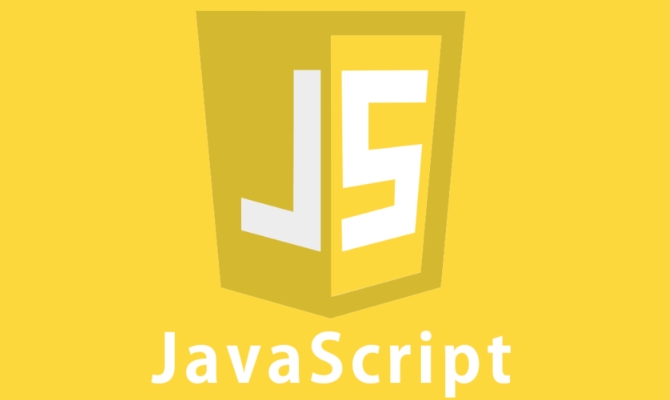Understanding Bundle Size and Code Splitting in Modern JS Apps
Aug 01, 2025 am 05:18 AMCode splitting improves JavaScript application performance by reducing initial bundle size; it works by splitting code into smaller chunks loaded on demand, leading to faster initial load, better caching, and improved user experience. The three main types are: 1. Route-Based Splitting – load code per route using React.lazy and Suspense; 2. Component-Level Splitting – lazy-load non-critical components like modals; 3. Vendor Splitting – separate third-party libraries for longer caching. Best practices include using dynamic import(), analyzing bundles with tools like Webpack Bundle Analyzer, prefetching resources, and tree-shaking to eliminate unused code. However, pitfalls include HTTP overhead from too many chunks, handling loading states, and large third-party scripts undermining gains. Code splitting doesn’t reduce total size but optimizes when code is loaded, enhancing perceived performance when combined with lazy loading and proper analysis.

When building modern JavaScript applications, performance is critical — and one of the biggest factors affecting load time is bundle size. As apps grow, so does the amount of JavaScript that needs to be downloaded, parsed, and executed. That’s where code splitting comes in as a key optimization strategy.

Let’s break down what bundle size means, why it matters, and how code splitting helps.
What Is Bundle Size and Why Does It Matter?
In a typical JS app (like those built with React, Vue, or Angular), your code, along with dependencies, gets bundled into one or more JavaScript files using tools like Webpack, Vite, or Rollup. This is your bundle.

- Large bundle size means more data to download.
- Mobile users on slow networks suffer the most.
- Browsers must parse and compile all that JS before the app becomes interactive — this delays Time to Interactive (TTI).
- Search engines consider page speed in rankings.
Even if your app is feature-rich, users shouldn’t pay the cost of loading code they don’t immediately need.
What Is Code Spliting and How Does It Help?
Code splitting is the practice of splitting your bundle into smaller chunks that can be loaded on demand or in parallel.

Instead of one 500KB main.js, you might have:
-
main.js(100KB) – core app logic -
auth.js(50KB) – login/signup code -
dashboard.js(120KB) – user dashboard -
vendor.js(200KB) – third-party libraries
These chunks are loaded only when needed.
Key Benefits:
- Faster initial load
- Better caching (changes in one chunk don’t invalidate others)
- Improved user experience, especially on mobile
Types of Code Splitting
There are three main approaches:
1. Route-Based Splitting (Most Common)
Split code by routes. When a user navigates to /dashboard, only load the dashboard code.
// React with React.lazy and Suspense
const Dashboard = React.lazy(() => import('./Dashboard'));
function App() {
return (
<Suspense fallback="Loading...">
<Dashboard />
</Suspense>
);
}This creates a separate chunk automatically with most bundlers.
2. Component-Level Splitting
Split less critical components (e.g., modals, tooltips) that aren’t needed on initial render.
const ImageEditor = React.lazy(() => import('./ImageEditor'));Useful for heavy UI components that appear infrequently.
3. Vendor Splitting
Separate third-party libraries (like lodash, moment, axios) from your app code.
Why? Vendor code changes less often, so browsers can cache it longer.
Most bundlers do this automatically with config like:
// Webpack example
splitChunks: {
chunks: 'all',
cacheGroups: {
vendor: {
test: /[\\/]node_modules[\\/]/,
name: 'vendors',
priority: 10,
reuseExistingChunk: true,
}
}
}Tools and Best Practices
-
Use dynamic
import()– It’s the standard way to trigger code splitting. - Analyze your bundle – Tools like Webpack Bundle Analyzer visualize what’s taking up space.
-
Preload or prefetch smartly – Use
<link rel="prefetch">for likely-next-page chunks. - Keep critical CSS/JS small – Avoid importing huge libraries in components that render early.
- Tree-shaking works hand-in-hand with code splitting – make sure unused code is removed.
Example: Importing
lodashlikeimport _ from 'lodash'pulls in the entire library. Instead, useimport { debounce } from 'lodash-es'to import only what you need.
Watch Out for the Pitfalls
- Too many small chunks can hurt performance due to HTTP overhead (especially on HTTP/1).
- Loading states need to be handled (e.g., with React Suspense).
- Third-party scripts (analytics, ads) can negate gains if they’re large.
Also, remember: code splitting doesn’t reduce total app size — it just spreads the load over time.
Code splitting isn’t magic, but when used wisely, it dramatically improves perceived performance. Combined with lazy loading and good bundle analysis, it’s a cornerstone of modern web performance.
Basically: ship less code upfront, load more later — only when needed.
The above is the detailed content of Understanding Bundle Size and Code Splitting in Modern JS Apps. For more information, please follow other related articles on the PHP Chinese website!

Hot AI Tools

Undress AI Tool
Undress images for free

Undresser.AI Undress
AI-powered app for creating realistic nude photos

AI Clothes Remover
Online AI tool for removing clothes from photos.

Clothoff.io
AI clothes remover

Video Face Swap
Swap faces in any video effortlessly with our completely free AI face swap tool!

Hot Article

Hot Tools

Notepad++7.3.1
Easy-to-use and free code editor

SublimeText3 Chinese version
Chinese version, very easy to use

Zend Studio 13.0.1
Powerful PHP integrated development environment

Dreamweaver CS6
Visual web development tools

SublimeText3 Mac version
God-level code editing software (SublimeText3)

Hot Topics
 Why should you place tags at the bottom of the ?
Jul 02, 2025 am 01:22 AM
Why should you place tags at the bottom of the ?
Jul 02, 2025 am 01:22 AM
PlacingtagsatthebottomofablogpostorwebpageservespracticalpurposesforSEO,userexperience,anddesign.1.IthelpswithSEObyallowingsearchenginestoaccesskeyword-relevanttagswithoutclutteringthemaincontent.2.Itimprovesuserexperiencebykeepingthefocusonthearticl
 What is event bubbling and capturing in the DOM?
Jul 02, 2025 am 01:19 AM
What is event bubbling and capturing in the DOM?
Jul 02, 2025 am 01:19 AM
Event capture and bubble are two stages of event propagation in DOM. Capture is from the top layer to the target element, and bubble is from the target element to the top layer. 1. Event capture is implemented by setting the useCapture parameter of addEventListener to true; 2. Event bubble is the default behavior, useCapture is set to false or omitted; 3. Event propagation can be used to prevent event propagation; 4. Event bubbling supports event delegation to improve dynamic content processing efficiency; 5. Capture can be used to intercept events in advance, such as logging or error processing. Understanding these two phases helps to accurately control the timing and how JavaScript responds to user operations.
 A definitive JS roundup on JavaScript modules: ES Modules vs CommonJS
Jul 02, 2025 am 01:28 AM
A definitive JS roundup on JavaScript modules: ES Modules vs CommonJS
Jul 02, 2025 am 01:28 AM
The main difference between ES module and CommonJS is the loading method and usage scenario. 1.CommonJS is synchronously loaded, suitable for Node.js server-side environment; 2.ES module is asynchronously loaded, suitable for network environments such as browsers; 3. Syntax, ES module uses import/export and must be located in the top-level scope, while CommonJS uses require/module.exports, which can be called dynamically at runtime; 4.CommonJS is widely used in old versions of Node.js and libraries that rely on it such as Express, while ES modules are suitable for modern front-end frameworks and Node.jsv14; 5. Although it can be mixed, it can easily cause problems.
 How does garbage collection work in JavaScript?
Jul 04, 2025 am 12:42 AM
How does garbage collection work in JavaScript?
Jul 04, 2025 am 12:42 AM
JavaScript's garbage collection mechanism automatically manages memory through a tag-clearing algorithm to reduce the risk of memory leakage. The engine traverses and marks the active object from the root object, and unmarked is treated as garbage and cleared. For example, when the object is no longer referenced (such as setting the variable to null), it will be released in the next round of recycling. Common causes of memory leaks include: ① Uncleared timers or event listeners; ② References to external variables in closures; ③ Global variables continue to hold a large amount of data. The V8 engine optimizes recycling efficiency through strategies such as generational recycling, incremental marking, parallel/concurrent recycling, and reduces the main thread blocking time. During development, unnecessary global references should be avoided and object associations should be promptly decorated to improve performance and stability.
 How to make an HTTP request in Node.js?
Jul 13, 2025 am 02:18 AM
How to make an HTTP request in Node.js?
Jul 13, 2025 am 02:18 AM
There are three common ways to initiate HTTP requests in Node.js: use built-in modules, axios, and node-fetch. 1. Use the built-in http/https module without dependencies, which is suitable for basic scenarios, but requires manual processing of data stitching and error monitoring, such as using https.get() to obtain data or send POST requests through .write(); 2.axios is a third-party library based on Promise. It has concise syntax and powerful functions, supports async/await, automatic JSON conversion, interceptor, etc. It is recommended to simplify asynchronous request operations; 3.node-fetch provides a style similar to browser fetch, based on Promise and simple syntax
 var vs let vs const: a quick JS roundup explainer
Jul 02, 2025 am 01:18 AM
var vs let vs const: a quick JS roundup explainer
Jul 02, 2025 am 01:18 AM
The difference between var, let and const is scope, promotion and repeated declarations. 1.var is the function scope, with variable promotion, allowing repeated declarations; 2.let is the block-level scope, with temporary dead zones, and repeated declarations are not allowed; 3.const is also the block-level scope, and must be assigned immediately, and cannot be reassigned, but the internal value of the reference type can be modified. Use const first, use let when changing variables, and avoid using var.
 JavaScript Data Types: Primitive vs Reference
Jul 13, 2025 am 02:43 AM
JavaScript Data Types: Primitive vs Reference
Jul 13, 2025 am 02:43 AM
JavaScript data types are divided into primitive types and reference types. Primitive types include string, number, boolean, null, undefined, and symbol. The values are immutable and copies are copied when assigning values, so they do not affect each other; reference types such as objects, arrays and functions store memory addresses, and variables pointing to the same object will affect each other. Typeof and instanceof can be used to determine types, but pay attention to the historical issues of typeofnull. Understanding these two types of differences can help write more stable and reliable code.
 How to traverse the DOM tree (e.g., parentNode, children, nextElementSibling)?
Jul 02, 2025 am 12:39 AM
How to traverse the DOM tree (e.g., parentNode, children, nextElementSibling)?
Jul 02, 2025 am 12:39 AM
DOM traversal is the basis of web page element operation. Common methods include: 1. Use parentNode to obtain the parent node, and can be chained to find it upward; 2. children return a collection of child elements, accessing the first or end child elements through the index; 3. nextElementSibling obtains the next sibling element, and combines previousElementSibling to realize the same-level navigation. Practical applications such as dynamically modifying structures, interactive effects, etc., such as clicking the button to highlight the next brother node. After mastering these methods, complex operations can be achieved through combination.






